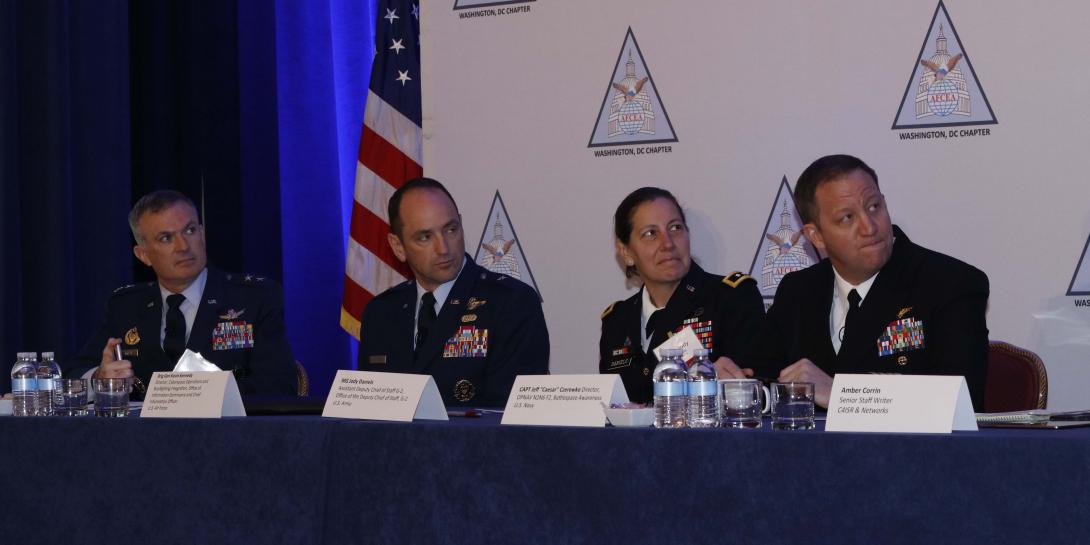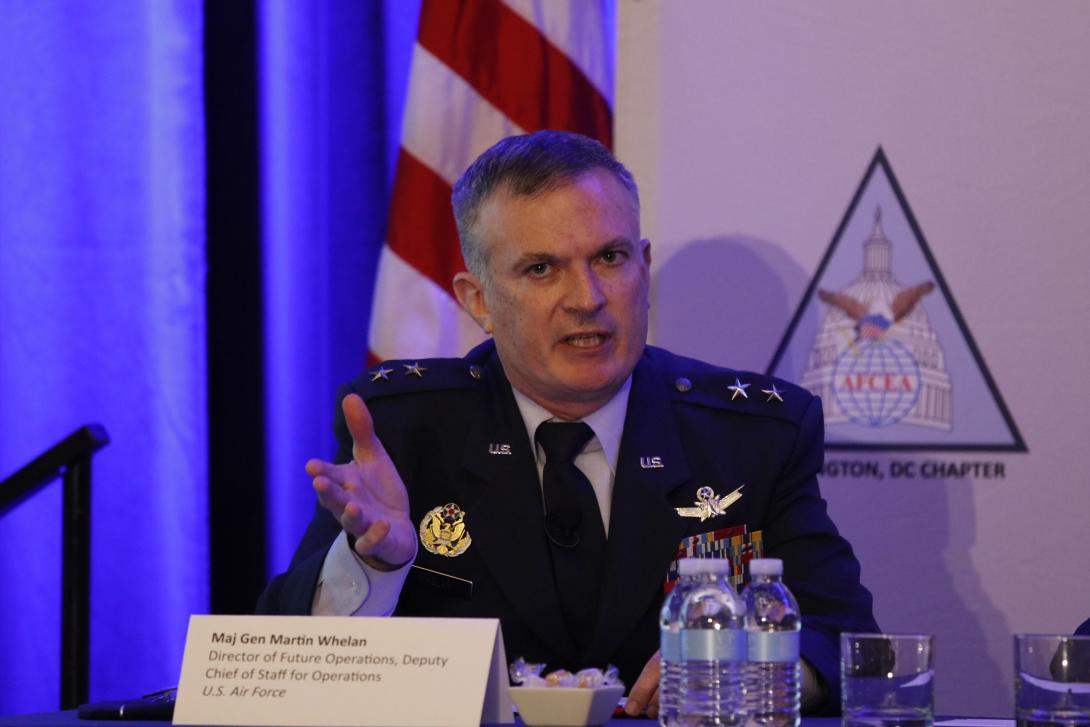Did the U.S. Military Get Mired in Big Data?
Adversaries have caused less of a disruptive aftermath on some U.S. military operations than a homegrown technology solution: big data.
Once viewed as a tremendous asset, troops can now be mired in the vast amount of information collected from ever-improving sensors of all kinds, impeding some missions in command, control, communications, computers, intelligence, surveillance and reconnaissance, better known as C4ISR. The quagmire drives leaders to seek solutions.
“Literally, we have more than a billion hours a year in the production of full-motion video just in the Air Force,” said Brig. Gen. Kevin Kennedy, USAF, director of cyberspace operations and warfighting integration in the Air Force Office of Information Dominance. “If you add in the other services, it’s probably well over two or three billion. How do we mine that so it’s tactically and operationally important?”
Optimizing C4ISR assets dovetails with efforts to improve cybersecurity and maximize efficiencies where possible, Gen. Kennedy said Thursday at an AFCEA DC Chapter monthly breakfast. “The United States military isn't in the efficiencies business, but in [the cyber] domain, as we expand and build the domain, if we know the chief efficiencies in our [information technology] it's going to have a real impact on our ability to produce warfighting capabilities,” he said.
Challenges persist to gather and make sense of the data deluge, particularly within the U.S. Navy, said Capt. Jeff “Caesar” Czerewko, USN, director of battlespace awareness in the Office of the Deputy Chief of Naval Operations for Information Warfare. “We’ve got distributed sensors all over the world … both covert and open. But the one thing that were really trying to learn is the TCPED side,” he said, using the acronym for the proper procedures for tasking, collection, processing, exploitation and dissemination. “We face challenges with deriving knowledge from the massive amounts of ISR and TCPED data.”
The military needs solutions that would make sense of collected data, no matter whether collected from a sensor that sits on the seafloor for many years or something flying at more than 50,000 feet, Capt. Czerewko said.
For years, the U.S. military enjoyed supremacy in the mostly uncontested domains of air and space. But adversaries have made great gains not just in those areas, but in cyberspace as well. Add the ingredient of years of budget downsizing, and the military struggles with deciding where to allocate dwindling dollars, panelists shared.
“We’re wedged between modernization and readiness,” said Maj. Gen. Martin Whelan, USAF, the Air Force director of future operations and deputy chief of staff for operations. “Finding that balance becomes a daily challenge of ours—that and trying to [determine] where we invest and where we have to hold on to legacy capacity for longer than some of us would want to.”
As the military converges its communications, electronics and intelligence disciplines to combat cyberthreats, the services are seeing a lot of requirements to bring together “the best of breed out there into some existing frameworks or create a framework that will allow the best of breed from different vendors to come together,” said Maj. Gen. Jody Daniels, USA, assistant deputy chief of staff, G-2, for the U.S. Army. “Right now, we're doing the bubblegum and the paperclip and trying to jam things altogether. We need some cleaner ways to bring these things together.”
“There are so many gaps,” Gen. Daniels said. “We’re all trying to modernize, trying to bring our networks together, reduce the footprint we have. Network convergence and cross domain solutions are still a big challenge for us, but we're getting there.”






Comments